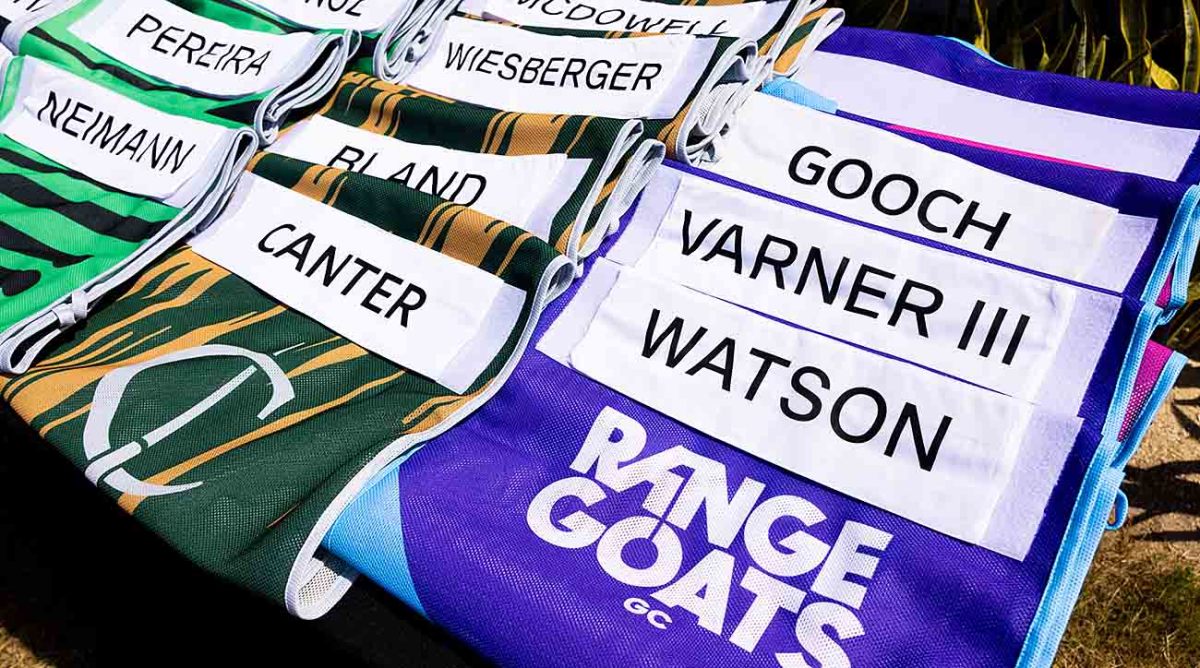LIV May Be 'Golf But Louder' But the Best Watching Experience Was on Mute
It’s kind of like a five-hour episode of Hee Haw, if you dare to imagine such a thing. One inane joke after another, purporting the notion that golf announcers make excellent comedians, with live music blaring in the background for lengthy stretches of the telecast. The competition itself becomes a side dish to someone’s perspective on how to make the game different. More marketable. More hip. It prioritizes the sizzle over the steak, which is not to suggest that the original product is anything close to grade-A sirloin.
So the joke’s on you, the viewer. LIV Golf’s second season teed off last Friday with bunkers to the left, water on the right and virtually no chance of hitting the fairway. Amid the constant stream of banter among those assigned to cover the tournament in Mexico, there really wasn’t much coverage at all—little insight, no depth or significance to the contributions made by the six-person crew armed with microphones. It turned the CW Network’s inaugural presentation of the rebel league into an afternoon with a thumb on the mute button.
At least Roy Clark could play a mean banjo.
Although Sunday’s final round began with commentary a bit more focused on the action, it soon dissolved into another yuk-yuk fest centered on the pros and cons of drinking beer out of a shoe. It was a tacky, self-aggrandizing diversion from a feature that had first aired Friday, a pre-taped vignette in which on-course reporter Su-Ann Heng played a hole against British Open champ Cameron Smith.
Once they finished, Heng and Smith shared a beverage from their own footwear on the green, a toast that had turned into a stupid pet trick among humans by Sunday. “I don’t know what’s wetter, Su-Ann’s shoe or Jerry [Foltz’s] pants,” lead analyst David Feherty quipped after Foltz attempted the same stunt. Ba-da-boom, folks. In an attempt to modernize a game that never struggles to parlay its roots into a healthy future, one tasteless vision deserves derision.
Many of the off-course components that ran during the first-round telecast were replayed two days later, as if LIV Golf’s production team would rather crack itself up than generate enough content to increase interest. The self-promotional vibe that emanates from this boutique operation is insufferable, subscribing blindly to the belief that most fans can’t stand what they see on CBS and NBC every weekend. Say what you want about the overdose of happy talk, Ian Baker Finchisms and PGA Tour-driven promos that characterize the incumbent product, but it’s highly professional at its core. Beyond reproach as a legitimate television program.
The Saudi-funded brand of slapstick might be enough to drive people away from the sport altogether.
Not for nothing, the renegade league clearly has embarked on a different growth strategy in 2023. The emphasis on team competition is now far more prevalent, a redirection that would further separate its identity from Camp Ponte Vedra’s mighty empire. It might also strike any potential viewership as confusing or contrived, at least from a competitive standpoint. Team golf? Isn’t that what the college kids do? Uh, yes, but at the risk of drawing parallels to a lack of professionalism, this commitment to offering “something different” might serve as LIV’s only chance of gaining traction on the TV landscape.
“It’s all about selling T-shirts,” Bubba Watson said of the new logos, team colors and various accoutrements native to the team concept.
It’s also a risk, but when you’ve got nothing, you’ve got nothing to lose. The team theme ostensibly serves as an attempt to create allegiances through alliance—fans rooting for Torque GC while despising the talent-heavy 4Aces—but the NFL and NBA depend greatly on civic support in their hometown markets to sell tickets and buy merchandise. Some franchises obviously enjoy widespread national support. The Dallas Cowboys have long been considered “America’s Team.” The New York Yankees and Los Angeles Lakers are likely to hear more cheers than boos on the road.

They are a chosen few, and in the case of a largely ignored troupe, reality is an unwelcome visitor. LIV Golf benefits from minimal territorial jurisdiction in its current form. Stinger GC is comprised of four guys from South Africa and Fireballs GC consists of four players from Spanish-speaking nations, but many of the squads are a mixed breed. These units came about without any particular rhyme or reason, some of them far more capable than others, the offspring of a lawless frontier dating back to when the upstart faction was focused almost entirely on attracting big names.
It translates to an uphill climb far steeper than LIV mouthpiece Greg Norman wants you to believe. The three teams formed exclusively by Tour defectors from the United States don’t possess the clout necessary to alter America’s perception of a rival league with incorrigible motives and underhanded intentions. A clearly defined enemy, in the eyes of many, meaning Norman and his band of pirates will have to scour foreign countries to generate any type of positive mojo.
There are options, provided Norman and his braintrust set aside their egos long enough to realize the years of hard work ahead of them. If they’re going to lean on the team dynamic, why not bring other competitive formats into the mix? Match play. Alternate shot. Hey, if you’re going to send the fellas out in a shotgun start, why not employ the charity-tournament scramble as an intriguing deviation from the stroke-play norm?
In essence, golf is no more of a team endeavor than is checkers or bowling. You can’t have two guys simultaneously rolling the same 16-pound ball down the alley unless you want to get thrown out of the joint. If basketball is the ultimate group-oriented athletic contest, golf is the opposite. Each participant has his own ball—see you in five hours and we’ll add ‘em all up. LIV is a thousand miles away from optimizing its innovative little concept. Modernization doesn’t start and end with the idea of sending 48 dudes out at the same time.
If and when you discover that life outside the box can be rewarding, you’re still dancing in the dark without any level of acceptance from the United States, however arrogant that might be. Stuff like posting tweets from people watching at home during live tournament action or piling spectators up on certain tee boxes to make it look like the product is more successful than it is—that’s not big league. If you want to earn the game’s respect, if you’re trying to make it better without sacrificing an ounce of your own self-importance, you wake up tomorrow morning with an entirely different mindset.
LIV Golf needs a neurosurgeon. If the shoe fits, don’t drink from it.
